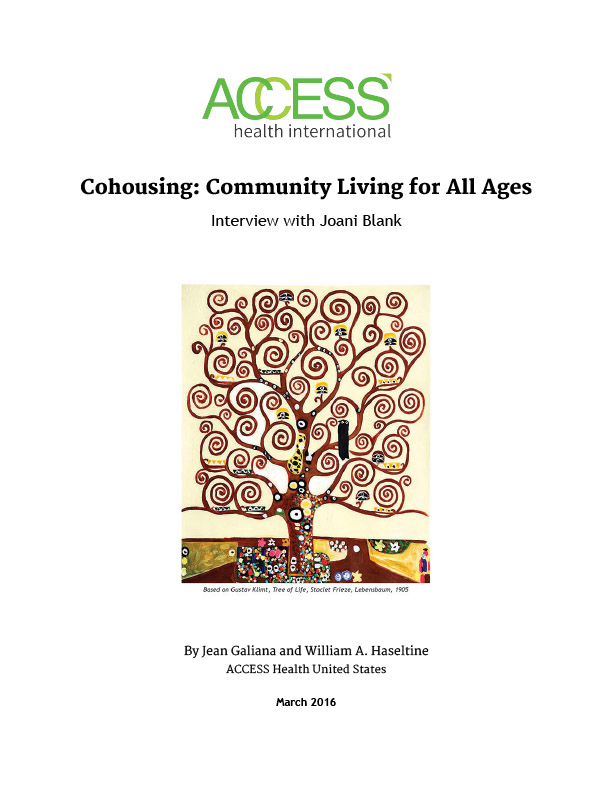The rapidly growing elderly population has made the development of inclusive housing models for older adults a global priority. In this interview, Joani Blank, a seventy eight year old resident of Swan’s Market Cohousing Community in Oakland, California, shares her personal experiences living in a cohousing community.
Cohousing offers community connection and engagement that enable seniors to stay in their homes and reduces the negative effects of loneliness and isolation. Social isolation contributes to the incidence of many chronic diseases, including obesity, heart disease, depression, and dementia. In contrast, cohousing communities inspire collaboration and connected living. Residents live in private apartments, condominiums, townhouses, or single family houses, but enjoy extensive common amenities. Every community has a common house that contains a kitchen and a dining area for common meals. All residents have access to common gardens, open spaces, laundry facilities, and children’s playrooms and playgrounds.
There are one hundred and fifty cohousing communities in the United States as of march 2016. Cohousing is a model of care that supports independent living and offers elders an alternative model for aging in place. Cohousing demonstrates how community living can benefit people at all ages and delay the need to relocate elderly into care homes.


